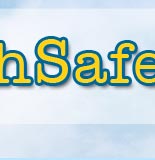|
|
| V D. TRAINING STUDENTS: |
1) Bystander Intervention Programs
Bullying rarely occurs in the absence of bystanders. Peers are present in about 85% of bullying episodes in school settings and up to 92% of elementary school students report having observed instances of bullying in their schools. In short, bullying is a group phenomenon.
The majority of bystanders do nothing to help the victims of bullying. If the bullying student is popular and has social status, bystanders may encourage the bullying, especially if the bystanders do not like the victimized student. When bystanders do intervene, bullying stops within 10 seconds more than half (57%) of the time. How can principals and teachers help students come to the assistance of victims of bullying and breakdown the “code of silence?”
In order to develop an effective bystander intervention program, it is important to consider some of the reasons bystanding students do not intervene.
They may:
Fail to recognize instances of bullying;
- Fear getting caught in the middle and being bullied, as well;
- Fear retaliation at a later time;
- Believe that adults will not be of help and may intervene and make the situation worse;
- Experience social pressure from their peer group not to intervene;
- Blame the victim;
- Believe that telling an adult about bullying is a form of “tattling” or “ratting;”
- Benefit in some way from the victimization of a student (e.g., gain a possession or social status or feel empowered).
Experts on anti-bullying programs have observed that
“Positive rapport and relationships between teachers and students must be established for
bystander intervention participants to successfully intervene on behalf of victims.”
“ Students who have been identified as leaders to intervene may be the most efficient and
successful means to increase bystander interventions.”
The components of any bystander intervention program include:
- Creating and nurturing a school climate of caring for all students and staff;
- Teaching students to recognize instances of bullying and distinguish between tattling and reporting;
- Teaching students to develop empathy for victims and accompanying guilt for not intervening (not blaming the victim);
- Teaching students how to report bullying to adults and to develop effective means of intervention;
- Setting up a peer warning system;
- Recruiting socially influential youth from a broad segment of student body to take the lead in bystander intervention;
- Empowering bystanders to intervene;
- Teaching conflict resolution skills to all students;
- Establish peer support interventions (See www.bullying.org for a
description of Peer Power Youth Network.)
We will now consider how to establish a Bystander Intervention Program. Additional suggestions on how to implement an effective Bystander Intervention Program can be found on the following websites and reference books.
Adults and Children Together Against Violence
http://www.actagainstviolence.org
American Psychological Association-APA Monitor on Psychology: New Ways
to Stop Bullying
http://www.apa.org/monitor/Oct02/bullying.html/
Olweus Bullying Prevention Program Stop Bullying
http://www.stopbullyingnow.hrsa.gov/index.asp
http://www.clemson.edu/olweus/ or olweus@online.no
Other suggestions on how to implement a Bystander Intervention Program can be found in Macklem (2003), Pikas (1989, 2002), Robinson & Maines (1997), Smith, Twemlow & Hoover (1999), Salmivalli (1999), Smith, Pepler and Rigby (2004), Tobler (1986). It should be noted that mediation procedures between students in conflict is often of limited value, especially when there is a noticeable imbalance between conflicting individuals. In such instances, the mediator cannot really act in a neutral manner; adult authority is needed.
Guidelines for Establishing a Bystander Intervention Program
The following set of guidelines provides some specific examples of what students and student leaders can do to reduce bullying in their schools and aide victims of bullying. How many of these activities do you have in place in your school? (You can download this next Section and distribute it to your students).
How Students Can Help to Stop Bullying. |
At the classroom level, the teacher can hold regular discussion meetings concerning bullying, have students conduct role plays and establish explicit classroom rules about victimization. In Olweus' bully prevention program the students establish the following rules:
- We shall not bully others.
- We shall try to and help those who are bullied.
- We shall make it a point to include students who are easily left out.
There are many ways students can help to stop bullying. Here are a few suggestions, but you probably have more. Remember, when you intervene do not bully the bully!
-Ask students, "What do they do when they see a child of their age being bullied?"
-Recognize when bullying occurs.
-Talk to the bully. Label the behavior as “bullying” and tell the bully to stop. Stand up to the person doing the bullying.
-Support someone who is being bullied. Reach out to the victim in friendship. Be an "ally”.
- Invite the student who is a bullying victim to join your group or engage in an activity with you.
-Report the bullying to school staff or to your parents. Tell an adult who you trust and can talk to.
-Tell the adult:
What happened, where and when it happened? Who did the bullying?
What form did the bullying take (physical, verbal social, computer-phone?
Where and when did the bullying occur?
How long did the bullying episode last?
Who else was present when the bullying occurred?
What did these bystanders do?
How long has this bullying been happening?
What did you do to handle the bullying?
Did it work?
How did this make you feel?
-Ask the adult how he/she will help. Check back in a couple of days to see whether the
adult has followed through on his/her plan to help.
REMEMBER
Telling is reporting to get someone out of trouble. It is not the same as tattling or ratting,
which is designed to get someone into trouble.
SUGGESTIONS FOR WHAT STUDENT LEADERS
CAN DO IN THEIR SCHOOLS TO PUT THE BRAKES ON BULLYING
- Conduct an anonymous survey in your school to see how many students have bullied or been bullied in the past week.
- Do an environmental assessment on a map of the school; ask students to show where bullying happens.
- Develop student-led presentations about bullying (this could be an assembly for several grades, classroom presentations to single grades, a skit could be prepared, etc.). You might want to do this for parents too! Parents often need help understanding bullying and what can be done to stop it.
- Develop a Circle of Caring Program in which students volunteer to serve as “supporters” to students who are victims of bullying.
- Implement a Peacemakers/Conflict Resolution program.
- Spearhead a Peace Garden initiative, or other forms of school campus improvement.
- Develop student-led programs for lunch and other free time.
- Compile an anthology of student writing and artwork related to bullying.
- Develop a Poster Committee, in which students create and post anti-bullying messages throughout the school.
- Develop plans for a school-wide Anti-Bullying Day or Week
- Form a No-Name Calling Week school activity.
YOU WILL HAVE LOTS OF GREAT IDEAS YOURSELVES…START PLANNING!
_________________________________________________________________________
_________________________________________________________________________
_________________________________________________________________________
_________________________________________________________________________
_________________________________________________________________________
_________________________________________________________________________
Another resource that schools should develop is a Student Leaders’ Handbook for distribution schoolwide. The following is an example of such a Handbook. You are welcome to download it.
STUDENT LEADER’S HANDBOOK
What is Bullying?
Bullying is not fair.
- Bullying involves a power imbalance - students who bully are more powerful than students targeted as their victims because of an advantage of age, size, ability, social status, peer support, etc. Students who bully others may also have power if they harass or provoke other students about a sensitive concern (e.g. being short, overweight, or about race, family or sexuality).
- Students who bully harass on purpose – their behaviors are not accidental.
- Bullying is not fun for the victimized students who experience distress and may feel: angry, anxious, fearful, sad, embarrassed, and ashamed.
- Students who are victims of bullying often feel unsafe at school and try to avoid going to school.
- Bullying happens over and over again.
- What are the Types of Bullying?
Direct (Face-to-Face)
- Verbal (teasing, insults, put-downs, harassment)
- Psychological (making a mean face, rolling your eyes, “dirty looks,” uttering threats, extortion)
Indirect (Behind Someone’s Back)
- Gossip (lowering people’s opinions about the victimized student)
- Leaving out, exclusion, shunning
- Social aggression (telling people not to be friends with a victimized student)
- Cyber (Use of electronic technology as a vehicle for bullying and harassing)
- Sending threatening or harassing emails or instant messages
- Creating a website that belittles or ridicules another student
- Taking unflattering or inappropriate pictures of other students without their
- permission and sharing them with others or posting them on an internet site
- Stealing someone’s password and sending mean messages to others
- Tricking someone into sharing sensitive personal information while instant
messaging and then forwarding that information to others
Who is Involved in Bullying?
Observational research shows that:
- Peers are present in 85% of bullying episodes on school playgrounds.
- Bullying is common on school playgrounds. Students are involved in bullying about once every seven (7) minutes.
- Many different types of students engage in bullying, and many different types of students become victims.
- Bullying is very stressful for students who are victims or onlookers, and eventually, even for students who behave as the bullies.
- Bullying is kept hidden from adults and teachers.
- Students are VERY effective in stopping bullying when they intervene.
How are Students Involved in Bullying?
Students play many roles in a bullying situation:
Student who is considered a bully and bullies others - often bully more than one student.
Student who is a victim of bullying - usually only one student.
Bystanders- students who are close enough to see and hear the bullying behavior.
Intervenors- students who do something to “Put the Brakes on Bullying.”
How Can Students Help To Stop Bullying?
There are many ways in which students can help to stop bullying. Here are a few
suggestions, but you probably have many more. Remember, when you intervene- do not
bully the bully!
Talk to the student who is bullying. Label the behavior as bullying and tell the bullying student to stop.
Reach out to the victimized student in friendship. Provide comfort and support to any student who is a victim of bullying. (Be an “ally”).
Report the bullying to school staff or to your parents.
Remember: Telling is reporting to get someone out of trouble. It’s not the same as tattling or ratting, which is to get someone into trouble.
What Can You Do If Someone is Bullying You?
There are many ways in which students can respond when they are being bullied. Here are a few suggestions, but you probably have many more. Remember, do not bully the bully- fighting back, almost always makes the situation worse! - Ignore and walk away from the bullying student (this works best when bullying is mild).
- Look the student who is bullying you in the eye, and confidently tell her/him to stop.
- Report the bullying to your teacher or to your parent.
You could try:
- Using humor.
- Finding “allies.”
- Being with a group of other kids.
- Staying near a grown up.
- Staying busy playing (for example, on swings where it is difficult for a bullying student to get to you).
You should definitely:
- Tell someone you trust how you are feeling.
- Don’t keep your stress bottled up inside.
Remember, you have the right to feel safe at school and in your community.
2) STUDENT MEDIATED CONFLICT RESOLUTION PROGRAMS
Another way to involve students in the reduction of violence has been offered by the Cunningham's who have developed a student mediated conflict resolution program for fourth and fifth graders. This is a skills-focused training program where students are trained for some 12-15 hours on how to mediate student conflicts that may occur during recess or lunch periods. A team of mediators (approximately eight per recess period and team captains) are trained to identify and intervene in such conflicts. The student teams are supported by two active recess monitors. Such a student-based mediation program requires administrative policy support, the majority of teachers supporting such mediation efforts and the support of the parent-teacher organization. The program also requires supportive infrastructures involving:
- Two teachers or other school personnel who serve as mediation team champions.
- An assembly to launch program.
- Morning announcements.
- Centrally posted team bulletin board.
- Two active playground supervisors.
- Weekly team meetings.
- Visits by administrative representatives (superintendent, trustees) reflecting their commitment to the program.
Students who act as mediators are taught how to do online mediation and how to refer more intense conflicts for office mediation. The theme of conflict resolution is incorporated in a school-wide curriculum and conveyed to parents. Research indicates that student mediators are able to resolve approximately 90% of student conflicts. The student mediated conflict program has been successfully implemented in many schools.
See: Cunningham, C.E. & Cunningham, L.J. (2006). Student-mediated conflict resolution programs, In R.A. Barkley (Ed.) Attention-deficit hyperactivity disorder (3rd ed.) (Pp. 590-607). New York: Guilford Press.
Cunningham, C.E., Cunningham, L.J. & Martorceli, V. (2001). Coping with conflict at school: The Collaborative Student Mediation Project Manual. Hamilton, Ontario, Canada: COPE Works. |
| V E. SCHOOL-WIDE INTERVENTIONS |
In order to reduce school violence and bullying, schools have implemented school-wide assessment and intervention programs. As discussed under MENU 3, ASSESSMENT PROCEDURES (MENU III B7), a School-Wide Information System (SWIS http//www.swis.org) has been employed effectively to record Office Discipline Referrals (ODRs).
(Contact person Rob Horner, Ph.D., College of Education, University of Oregon, Eugene, OR 97403).
The folks at the University of Oregon have also developed an effective school-wide behavioral intervention program called the Effective Behavior Support (EBS) Program that is now being used in some 400 schools in the U.S. The EBS program can supplement the other core elements of an anti-bullying program discussed on this website.
Effective Behavior Support (EBS) Program
This is a school-wide intervention program that teaches all students and staff how to:
Be safe
Be respectful
Be responsible
across all school settings. Each of these principles is translated into specific behavioral rules. For example, as described by Horner et al. (2001), also see Positive Behavioral Supports at http://pbis.org.
Classroom |
| Be safe |
Follow directions
Keep floors clean |
| Be respectful |
Raise hand
Keep hands and feet to self |
| Be responsible |
Bring books and pencils to class
Do homework |
Different social skills are identified and taught in different contexts. Each behavioral expectation is translated into a rule and then practiced. For example, “Be safe” in the bus area means standing behind the red line. “Being responsible” in the bus area means talking to friends without pushing and shoving. “Being responsible” means being on time. Teachers provide examples of the most common behavioral errors. Practice of these skills may last 20 minutes and students would receive recognition for correct behaviors. Students have opportunities to practice “Be safe,” “Be respectful” and “Be responsible” behaviors in various settings including classrooms, gym, hallways, playground, lunch and bus areas.
It may take up to 2 years to effectively teach and rehearse all of these EBS skills. The EBS program has been found to reduce disciplinary referrals to the principal by 40-50%. For more details on EBS see:
-
Horner, R., Sugai, G., Lewis-Palmer, T., and Todd, A. (2001). Teaching school-wide behavioral expectations. Emotional and Behavior Disorders in Youth, 1(4), 77-79: 93- 96.
- Horner, R.H., Sugai, G., Todd, A.W., and Lewis-Palmer, T. (2005). School-wide
positive behavior support: An alternative approach to discipline in schools, in L.
Bambara & L. Kern (Eds.) Positive behavior support. New York: Guilford Press.
|
| V F. PLAYGROUND INTERVENTIONS |
Most bullying takes place in unsupervised areas and often during recess. As noted, teachers are more likely to intervene on bullying incidents in their classrooms than in playgrounds. A number of free-play incentive programs have been developed that are designed to reinforce desired social skills and reduce bullying. For example, Walker, Ramsey and Gresham (2004) describe a Playground Behavior Game that involves having a large poster displayed in the classroom listing the playground rules and an active role for playground supervisors who are expected to:
- Move around the play area a great deal in order to observe, monitor, coach and reinforce positive student behaviors;
- Look for examples of specific prosocial behaviors such as interacting nicely with peers, following directions, playing properly, staying within designated boundaries, including someone else in their game; and lining up behavior;
- Call attention to the desired behavior by presenting the student with an armband (20 to 50 armbands per period may be given out);
- Use teams of students who will be able to trade armbands for group rewards;
- Enlist two or three students as special helpers to distribute armbands, once all the students understand the Playground Behavior game. (Rotate students elected for helper roles);
- Use a response cost system where students can lose pre-awarded group points for behaviors such as teasing, arguing, name-calling, bullying, leaving the boundary area, entering the building; fighting, not coming at the signal, not using playground equipment properly, not following directions, not lining up, not using “inside voice” when entering the school;
- Give feedback to the teacher who can reinforce and debrief students (e.g., Examine how a negative situation could have been handled in a more positive way. Reinforce group – “I heard the green team did an excellent job including someone else in their game.”)
For more detailed information see:
Walker, H. M. Ramsey, E., & Gresham, F. M. (2004). Antisocial behavior in school: Evidence – based practices (2nd Ed.). Belmont, CA: Wadsworth/Thompson Learning |
| V G. Interventions with “High-Risk” Students |
G1. Helping Children Who Bully
WORK WITH STUDENTS WHO BULLY AND STUDENTS WHO ARE VICTIMIZED
- Prevention is the key! Administrators should know that
- Bullying is a relationship problem that requires relationship solutions.
- Students who bully are quite diverse. Some bullies are popular among their peers and
have leadership skills, while other bullies lack social understanding and have
accompanying relationship skill deficits.
- Most students who bully are proactively aggressive, that is, their aggression is aimed at obtaining a desired end or goal, such as being driven by victim dislike and a desire to impose humiliation and control, obtain material goods, or peer social status, or as response to peer pressure. Consequently, the bullying behavior is more frequently the product of calculation and reasoning, not anger and impulsivity. Proactive aggression (cool, calculating, thoughtFUL) should be treated differently than reactive aggression (hot-headed, anger-induced, thoughtLESS).
There is a need for a careful assessment of the behavior and motivation of children who bully. Some bullies will need ongoing focused support and they may require educational and social skills interventions.
- Bullying thrives in conditions of secrecy and isolation where adult supervision is
lacking. Bullying behavior is repetitive, intentional and rewarding and school
personnel need to be vigilant for when such behavior occurs.
- Schools who implement a “No Bullying” policy and accompanying staff training programs reduce the likelihood of bullying behavior.
When reporting incidents of bullying is the norm, the likelihood of bullying behavior decreases.
- Principals and teachers need to promote a positive, respectful supportive climate in
the school and classroom.
- Teachers need to promote positive peer interactions and ensure that marginalized
children are included in positive peer groups.
- Build on the "strengths" of children who bully.
- Use Restorative Justice procedures where children who bully are required to engage
in some socially acceptable behavior (eg., helping others).
- Enhance peer support for victimized children.
- See article by Debra Pepler, Bullying interventions: A Binocular Perspective. Journal
of Canadian Child and Adolescent Psychiatry, (2006) 15, 16-20.
http://www.canacad.org/a2006FebBullyingInterventions.pdf
WHAT CAN BE DONE ABOUT BULLYING?
- Conduct an administrative meeting to address the school’s issue of school bullying. (e.g., implement school-wide prevention programs).
- Arrange for teachers being more watchful. Alter supervisory patterns. Encourage accurate reporting.
- Solicit the bullying students' accounts of what happened. Assess carefully to be certain
that the students’ behaviors are indeed a form of bullying behavior (power imbalance, victim distress, repeated over time) and not one of the more prevalent forms of student-to-student aggression. Be certain of your facts before engaging the bully. Never rely on just the student who was bullying as a source of factual information on the question of bullying incidents.
- Invite the parents of the student who bullies to participate in the conference. Explain the school’s policies and solicit their support. Plan for defensive parents.
- Work individually with the students who bullies, separately from co-bullies or from henchmen, in order to avoid the elevation of the social status of either party or inadvertently furthering their bonds.
- Never use victim’s names with the bulling student so as to reduce retaliation possibilities. Rather speak globally about what you have been told by others in the school and what you have observed yourself. Remember; there may be other victims of this student who bullies that you don’t know about. It is better not to share specific names with the student who is known to bully.
- Identify the student’s behavior as “bullying." Do not accept the student’s characterization of it as “just playing around”, or “having fun,” or something that “everybody does." The student would not be in your office if any of that were true. Similarly, do not accept victim-blaming as an excuse for bulling behavior. Listen for the student who bullies to use phrases like “If he” or “If she", as a signal of victim-blaming.
- Do not moralize or attempt to elicit victim pity from the bullying student. Many students who bully can give you exactly what they think you want to hear.
- Educate students who bully about:
- The school’s code that defines and prohibits bullying;
- The variants of bullying that are prohibited including physical, verbal, direct and relational;
- The impact of bullying on self and on others.
- When discussing bullying behavior, have the bullying student consider the pros and cons
of such behavior.
- Have the student who bullies convince you of the merits of his/her bullying behavior. Ask, “Help me to understand how this behavior is right for you", “works for you”, or “is in your best interest", or “keeps you out of trouble you don’t want”, Challenge the responses that support bullying.
- Ask the student who bullies, “What is preventing him/her from making the changes that will allow him/her to avoid bully behavior?”
- Teach the student who bullies a problem-solving approach:
-
What is the problem and what is my goal?
- What are my possible solutions?
- What are the likely consequences of each solution?
- Which one should I select?
- How did it work out?
Students are taught GOAL-PLAN-DO-CHECK.
- Encourage students who bully to use reminders to assist problem-solving in provocative situations (e.g., “I need to get away from him” or “Turn away”, or “Take a time-out”)
- Train students who bully how to avoid engaging in bullying behavior by
seeking help from others
Identify and use role-plays of potentially provocative situations involving bullying behaviors using student-selected bully-avoiding techniques. Solicit commitment statements from the student who bullies of when and where he/she will use bully-avoidant behaviors, and most importantly, the reasons why he/she will change his/her bully behaviors.
- Chart and reinforce days of non-bullying behavior
- Ensure that a student who bullies “takes credit” for the changes he/she has been able to make. Ask the student, “Are you telling me that you were able to notice that was a high-risk situation and you could catch yourself and use your bully-avoiding game plan?” “Are you saying that in spite of the provocation you were able to use your time out?”
It is not enough that students change, there is a need to have them “take credit” for the changes and pride in their performance.
- Put the student who bullies in a consultative role so he/she can teach bully-avoiding skills to others (e.g., younger students), thus using his/her leadership skills.
- Nurture prosocial skills. Redirect the student who bullies toward more prosocial endeavors.
- In some instances, there may be privilege revocation at school and/or at home for
repeated episodes of bullying.
- Use developmentally appropriate learning activities related to bullying.
Older students who bully:
- Have bullying students conduct an Internet web search of bullying websites and have them write a report.
- Have students who are considered bullies write a story about a bully who changed his or her ways.
- Have students who bully others write a report about a peaceful historical figure (e.g., Martin Luther King, Gandhi, Mother Theresa) and relate the report to their current behavior. Have these students share what they have learned with other students, teachers and parents.
- Have bullying students read and discuss a teacher-suggested novel related to bullying (See the list of possible books below).
- Have students who are considered bullies write a letter to others why they should stop bullying.
Younger students who bully:
- Have students who bully draw a series of “No bullying” posters for display.
- Have students who are considered to be bullies draw a picture of what it is like to be a bully.
- Read and discuss a teacher-suggested story related to bullying.
- Write a letter to others why they should stop bullying.
- Second time, repeat offenders will require a more intensive intervention. Assess for
possible skills deficits, presence of co-occurring problems like ADHD (hyperactivity),
presence of peer pressure, mood disorder or abusive family conditions. Determine the
level of popularity of the child who bullies. Conduct a functional analysis of the child’s
aggressive behavior.
- If necessary, additional interventions may be required for a time-limited period and
regularly evaluated. These may include:
- Restrictions of movement around the school or at recess unless in the presence of a staff member (“Teacher Sight Status”);
- Using behavioral contracts that encourage and reinforce non-bullying behaviors;
- Engaging students and parents in a behavioral contract using daily school-home reports;
- Providing aversive consequences in the form of time-out periods, loss of privileges at school and home and social disapproval from significant others;
- Using in-school suspensions.
- Simultaneously work with the bullying student on developing prosocial “strengths” (e.g., Bullying student who is good at looking after animals, can be given this job by the
principal). Provide opportunities to gain positive attention for prosocial behaviors.
- Have students who bully affiliate with prosocial peers and with a supportive mentor.
- Refer chronic offenders for possible other mental health services.
- Don’t give up on the student who is considered a bully.
G2. Helping Children Who are Victimized by Bullying
Victimization is associated with concurrent depressive symptoms, loneliness, social dissatisfaction, school avoidance and dislike of school. Such negative reactions linked to victimization may persist even after the victimization has ended. Some children are prone to be victimized because they are more likely to be submissive and socially anxious.
They are more likely to have fewer friends and to lack peer affiliation.
They may be susceptible to peer exclusion and rejection by peers. Such victims are often physically weaker. Also, they may not manifest gender-specific role behaviors (e.g. not like sports). All of these features may make them an "easy mark" for victimization, especially by older children who bully who are not members of their classroom.
In contrast to the submissive victim of bullying, there are a group of students who have been characterized as aggressive victims. This group of students demonstrate a mixture of both social withdrawal behavior and aggressive behavior. These children are more prone to be victimized than either the socially withdrawn or aggressive children. They show evidence of more "hot button" reactively angry responses, and they are more likely to think other children's reactions to them are done "on purpose" and that these call for an aggressive response. Such aggressive victims are more likely to come from homes where they have been maltreated. They may require additional counseling and help beyond the teacher or the school's effort to be of help. They may benefit from specific skills training in anger-control, social problem-solving, and attribution training so they do not engage in self-blaming and blaming others. They may need to learn ways to develop and maintain peer friendships. |
WORK WITH CHILDREN WHO ARE VICTIMS OF BULLIES
What Victims Need To Know
- Victimized students are not alone.
- Victimized students have a right to be and feel safe in the school setting.
- The school expressly prohibits bullying in all its forms.
- Students who are victims of bullying have a right to expect adults will intervene and act positively.
- Reporting bullying is “Right” and won’t backfire.
- Informing his/her parents about victimization can help.
- Teachers, parents and other students can form a team to help children who are victims of
bullying.
Skills Victims of Bullying Need To Have:
Assess for possible danger ahead of time.
- Choose from a coping repertoire of encounter responses, including:
- Verbal assertion;
- Using strategic behaviors like going on swings ( for elementary school) where children who bully are less likely to bother them;
- Help-seeking behaviors (nearby peers or adults);
- Strategic acquiescing;
- Walking or running away.
- Immediately report a bullying encounter.
- Make and maintain peer friendships.
SCHOOL PERSONNEL WHO WORK WITH CHILDREN WHO ARE VICTIMS OF BULLIES SHOULD
- Use non-directive interview skills to assess the level of the student’s distress. Let the
student talk at his/her own pace. Show unqualified empathy for victimized student's
feelings.
- Assure the child of confidentiality and his/her involvement in all aspects of any decisions
or actions that will be taken. Consider mandated reporting issues and the need for
agreement on confidentiality by all who are involved.
- Conduct a risk assessment in terms of:
- Severity of the bullying (Is it physical, verbal, relational or a combination of these types of bullying?)
- Frequency of bullying (Does it occur often? Are there multiple students who do the bullying?)
- Pervasiveness of the bullying (Where does it occur? Is it happening in school, at home or in multiple settings
- Chronicity of the bullying (How long has this been going on?)
In short, obtain a victimized narrative:
Can you tell me why you are here today? What can I do to help you today? You look very troubled; is there something you’d like to tell me? (If necessary). I’ve been told that some students are bullying you. Would you like to tell me about that? (Assess for the level of distress) |
- Decide together on a set of action steps. DO SOMETHING TODAY, no matter how small, and let the child be a part of the decision-making process.
- Assure the student who was victimized that he/she will not be asked to confront the student who was bullying, thus avoiding revictimization, unless this is a mutual decision.
- Suggest a course of action that will protect the child in the short-term. Who should be notified of the bullying incident; who can be of help? Highlight the school’s policy against bullying that should be followed. Have the student collaboratively problem-solve solutions.
- Encourage the involvement of the child’s parents. Role play how the child might explain the bullying to his/her parents. If necessary, ask permission to call the parents. You can ask if it is okay to inform the student’s teachers and the principal.
- Enact the agreed-upon plan and make an appointment to see the victim the next day or later in the same day.
- Develop a long-term action plan (e.g., skills training, support, individual and group counseling,meeting with the student who bullied, if desired).
- Encourage the involvement of the child’s parents. Role play how the child might explain the he bullying to his/her parents. If necessary, ask permission to call the parents. You can ask if it is okay to inform the student's teachers and the principal.
- Enact the agreed-upon plan, and make an appointment to see the victim the next day or later in the same day.
- Develop a long-term action plan (e.g., skills training, support, individual and group counseling, meeting with the student who bullied, if desired).
- Nurture friendship-making behavior on the part of the victim. The teacher can conduct a class assessment in the form of a Peer Nomination procedure by asking students to
identify the names of students, from a list of all students in the class, "Who would you like to get to know as a friend?" This nomination procedure would provide the teacher with a picture of potential friendship patterns that can be used. Classroom activities such as Peer Tutoring and Jigsaw Instruction could be arranged to nurture friendships with victimized children. Victimized students can even be given homework assignments such as speaking to a partner during recess, calling a partner at home, or inviting a partner
over to play. The degree to which victimized children can seek help from friends and have friends who are capable of providing protection, the likelihood of them being victimized is reduced.
- All adults who interact with victims (school administrators, teachers, recess monitors, bus drivers, cafeteria staff) need to:
- monitor for bullying,
- praise students who act to protect and engage marginalized students, and
- praise victimized children for their efforts to engage peers and for their use of their coping skills.
|
|
|
|
 |







